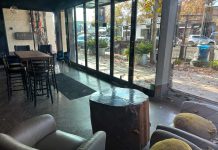GILROY
– Still on the fence about picking up that sweater you saw over
at the outlets for dad’s Christmas present?
GILROY – Still on the fence about picking up that sweater you saw over at the outlets for dad’s Christmas present?
Well, city officials hope you go ahead and buy it. You can always exchange it if he doesn’t like it – and in the meantime, you could be helping to put firefighters on the streets.
As Bay Area shoppers watch the ads and then head down the highways toward the Gilroy Premium Outlets and other local stores today and in the coming weeks before Christmas, city officials hope they like what they find: The resulting sales tax revenues are very important to city coffers.
So far, very rough projections show sales tax revenues may be even lower this year than city officials have anticipated – but the next few months will be the crucial indicator of that performance.
And at the moment, officials are conservative – if somewhat Scroogish – about what the holiday season will bring.
“My feeling is it won’t be different than last year, and that was very flat …” City Administrator Jay Baksa said of the Christmas-season economic picture. “I just hope it doesn’t go down dramatically.”
Sales tax revenue provides the single biggest chunk of discretionary revenue for the city. It makes up about a third of the roughly $31-million General Fund, which is the relatively unrestricted pot of money that Councilmembers have to play with every year.
The Premium Outlets and the city’s auto dealers are the two big economic engines, each making up roughly about a quarter of that sales-tax pie.
Most of the sales tax money goes toward paying salaries, especially for putting cops and firefighters on the streets. In fact, public safety makes up roughly 76 percent of General Fund spending in Gilroy.
So far this fiscal year, initial projections for sales tax performance aren’t exactly good news.
At current estimates, the city would pull in roughly $10.9 million in net sales tax revenue by the end of this fiscal year next summer – about $500,000 off the $11.4 million that was projected in the budget adopted last summer. But after the Christmas season is when officials say they’ll really know what to expect for the year.
“It’s not really a good indicator,” Baksa said of the $10.9 million number. “The next three months are where it counts.”
The $11.4 million in sales tax revenue originally projected for this year forecast a modest 3 percent growth in net revenue over last year’s numbers, assuming both some economic recovery and revenue from continuing economic development activity.
The city enjoyed an average 11-plus percent growth in net sales tax revenue during the 1990s, due to the economic and population boom and also continuing economic development from the outlets and other new businesses.
That growth was capped by huge respective yearly increases in net sales tax revenue for Gilroy of 15 and then 20 percent at the turn of the century in the 1999 and 2000 fiscal years.
It was the hottest economy the United States had ever seen, officials said of the big jump, as well as continuation of our economic development with the opening of new stores such as Home Depot and Staples.
“It was reflective of good times,” Baksa said.
But then the trend in sales tax revenues reversed, declining by an estimated nearly three percent with the Sept. 11 terrorist attacks and resulting recession in 2001-2002.
But the city has suffered nowhere near as badly sales-tax wise from recession as some North County communities, officials said, where tech-driven business-to-business sales made up much more of the sales tax pie.
“A lot of the places like Santa Clara really got hit with the sales tax,” said Mike Dorn, the city’s administrative services director. “We didn’t get hit really hard at all because very little of ours is business to business.”
While nothing’s recession-proof, the auto dealers and outlets generally are impacted less, officials said, with the car dealers generally affected more than the outlets. You may still go buy a shirt, but be more hesitant about a car – even though the dealers have put out some pretty good deals.
Meanwhile, very rough projections made last summer were for net sales tax revenue growth to return to about 5.6 percent in coming years as the economy rebounds.
And that doesn’t factor in new revenues from additional economic development – ranging from new Costco and Lowe’s stores to the rest of the massive Regency and Newman regional shopping developments at U.S. 101 and state Highway 152 – expected to add to the city budget starting mid-decade.
Combined, those developments could add more than $4 million annually in net sales tax revenue for the city in the last two or three years of the decade.













